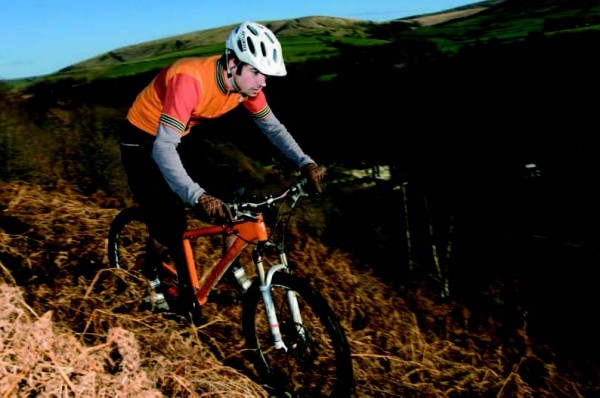
Santa Cruz Chameleon
Price: Frame from £599. Complete bikes starting from £1549.00
From: Jungle Products 01423 780 088 www.santacruzbikes.co.uk
Tested: Two months
Reviewed: Singletrack Magazine – Issue 39
Latest Singletrack Merch
Buying and wearing our sustainable merch is another great way to support Singletrack
Totting up here at Singletrack we reckon this is the fourth incarnation of the Santa Cruz Chamelon. Unlike its users, the Chameleon hasn’t changed a great deal over the years. The ‘Cham’, along with the GT Zaskar and, to a lesser degree, the Cannondale Beast of the East, were the first bikes morphed into the quintessential ‘UK hardtail’. You know the ones; biggest fork you could find (in 1995), biggest tyres available and a pair of anodised blue Club Roost riser bars to finish it off. You could take it down the jumps, do the wiggly stuff too and not have to rebuild it every Sunday night. If you did get rid of it you’ve probably seen a couple of generations of lads use it since as their first mountain bike or dirt jump bike as well.
So now the Chameleon is having one of those occasional facelifts that bikes get once they’ve reached a certain age. For the fans though, the important things remain the same; Big box chainstays make up a teeny rear triangle with possibly some of the most brutal feedback available to your calves this side of a CIA rendition flight. It is still the easiest thing in the world to loft the font end up and over stuff (if you haven’t ridden one before, keep that back brake covered) and mud clearance is still highly un-Californian.
The crazy-short feeling short top tube is still there, good for weighting the front wheel. You can still run the bike with a full gamut of forks, from 80mm race types to massive stanchioned bolt-thru monsters, the gusseted head tube has no problems either way.
New is a neat little eccentric bottom bracket if you’d like to singlespeed the bike and no, ours didn’t creak during the test, But then the Chameleon has probably one of the stiffest bottom bracket interfaces out there so I’d have been surprised if it had.
Top tubes on the small and medium have remained pretty much the same while the large and XL have gained a little in length. They look a lot longer than the previous generation with the seatube piercing the top tube in such a way that the connecting seat stays seem to be part of the top tube, so try before you buy, you may be going up a size from your normal ride. Bottom bracket height has increased and the headtube has been slackened by two degrees. All down to the recommended fork height being increased up to 160 mm, all of them little tweaks to keep the bike up to date with riding and component progression.
I’ve had a Chameleon of my own for a number of years and mine was built towards the burlier end of the spectrum with 150mm bolt-thru forks, big brakes, big tyres, big everything! Our test model was quiet different with 130mm Reba forks, Avid brakes and built as a much more general trail bike rather then than a technical slow-speed descender.
It’s very hard not to make comparisons between the two, but perhaps usefully you can see just how versatile the bike can be. The way that the front end of a Chameleon is built seems to have a much greater say on the bike than any other aspect of the frame, with a (relatively) shortish front end and 110mm stem.
It felt like a zippy (albeit short) XC bike tipped towards pinging off rocks rather than working your way round them. You feel very over the front almost to the point of it being unnerving, but if you work it, it really gets a shift on with loads of instant torque from that short back end. You can go from stop to bloody fast in very few pedal strokes. It’s a great short and steep, stand up and honk climber. What it won’t do in this guise though is really steep stuff going down – you really don’t want to be that far over the front, helping the fork to use up its travel so readily and those slack angles get steep very quickly
If I were going to summarise the bike in this guise I’d say it was a two-hour ‘go and savage your mates’ bike.
Build it up heavier and longer travel though, with a higher front end, bigger bars and bigger contact points and you’ll get a bike that feels much more planted. Like this, it’s not a happy climber at all, with the added weight removing the zing and the short top tube not making for a great seated climbing. Frankly, like this, it’s a pain.
But all is instantly forgotten the moment you point it down. Find any incline, drop the seat and let it go. I’m sure there are more efficient hardtails for descending but few which are as much fun or more rewarding, It’ll wring all of the skills you have out of you, set your arms and legs on fire as you work it through corners, make you bash yourself down steps and over rocks and when you’re shaking your arms out at the bottom and cackling like a fool, you’ll be quite happy to drag the monster back up again.
Overall: It’s not called a Chameleon for nothing.
Matt




